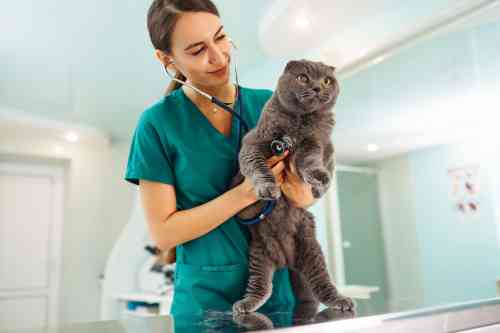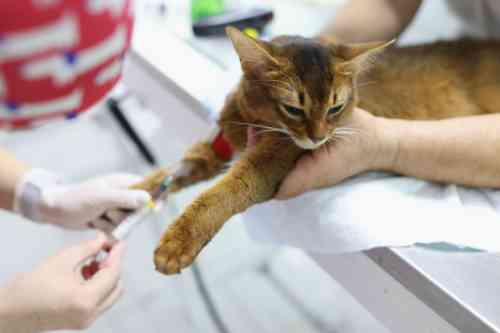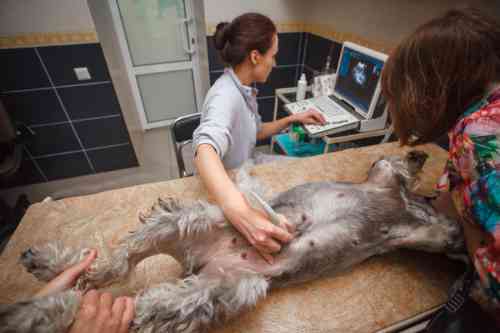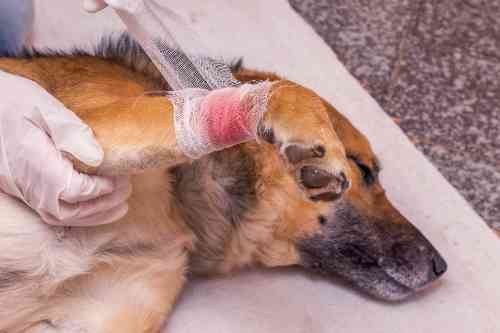What happens when you visit a veterinarian?
A complete Overview
Many dog and cat owners don’t really know what a typical visit to the veterinarian is like. This can cause some stress when it’s necessary to take your sick dog or cat to the veterinarian. In such cases, having an idea of what to expect can help you and your sick pet prepare for the visit, ensuring it goes smoothly. This article will explain what happens at the vet’s office, from the moment you walk in until you leave.
When should you visit your veterinarian?
You should visit the veterinarian if your dog or cat shows signs that are not normal for them. This could be noticing your pet feeling unwell, walking strangely, or discovering a lump. Or maybe you saw some discharge in the eye of your cat or dog. Any change in your pet’s usual behavior or condition is a reason to visit the veterinarian.
It’s also important to visit the veterinarian for preventive care. This includes vaccinations against feline distemper and cat flu in cats, and vaccinations against canine distemper, parvovirus, Leptospirosis, and liver disease in dogs. Don’t forget about spaying and neutering to prevent pyometra, ovarian cancer, or mammary tumors. All these are reasons to visit your veterinarian.
Making an appointment with your veterinarian
Walk-in sessions at veterinarians are rare as they can be very stressful for dogs and cats. Most veterinarians work by appointment only. So, if you need your veterinarian to examine your sick pet, you’ll need to call and schedule an appointment. Usually, you can get an appointment the same day. If you’re told to wait a few days but you think your pet needs urgent care, insist on an earlier appointment. Most clinics keep “emergency slots” in their schedule.
Leaving your house to visit the veterinarian
The ride to the veterinarian
The journey to the veterinarian starts with preparing your dog or cat for departure. For dogs, this usually only involves putting on a leash and driving. Walking is also an option, but only if your dog has the energy for it. Sick dogs may not be up for a long walk.
For cats, leaving the house can be more challenging. If your cat is used to a leash, that’s a good way to get to the veterinarian. However, consider that you might have to wait in the reception area, where dogs could be present, which can scare your cat. Many veterinarians have separate waiting areas for dogs and cats, but not all. A carrier is often a better option for cats, but getting them inside can be a challenge.
Use a carrier for your cat
The pet carrier that is shown above is most suitable. It’s sturdy and strong, with the added benefit of the entire top opening up. You can place your cat inside from above and then close the lid. There’s also a smaller opening at the front for petting your cat in the waiting room. Cats can often get nervous during the ride and might have accidents. This carrier is easy to clean, even at the vet’s office if necessary.
Cover the carrier with a large towel to darken it inside. Most cats are calmer in the dark. But make sure there is enough ventilation for your cat.
You can give your dog a chew bone to relax. Don’t give this to you dog when you are in the waitingroom. Fights may happen if another dog wants to have the bone. Spraying some Feliway in the pet carrier 15 minutes before leaving can help calm your cat.
Arriving at the veterinarian
When you arrive with your pet, check in at the reception. Sometimes the assistant might be busy helping the veterinarian. In that case, wait at the reception or place your cat in a quiet spot in the waiting room. Cats usually prefer to be higher up in the room. Check if your veterinarian has a designated area for placing cat carriers high up. Most veterinarians do.
After checking in and being registered by the assistant, you can sit in the waiting room or sometimes directly in the consultation room. Research has shown that examinations, especially for cats, are less stressful if they have a few minutes to get used to the space. Ask if you can let your cat (or dog) roam free in the consultation room. If not, you may have to wait in the waiting room until the veterinarian is ready to see you. This usually takes no more than ten minutes.
Examination by your veterinarian
The consultation
Once the veterinarian is ready, he or she will come to you. If you’re already in the consultation room, the veterinarian will join you there. If you’re in the waiting room, the veterinarian will escort you to the consultation room. The room is usually warm and quiet. Dogs can explore the space while cats can come out of their carriers. However, most cats prefer to stay in their carriers. Open the carrier so they can see and get used to the veterinarians movements.
While your pet is adjusting, the veterinarian will ask why you’re there. This conversation, known as “anamnesis,” helps the veterinarian gather information to determine what might be wrong with your pet.
The physical examination
After the conversation, the veterinarian will want to examine smaller dogs or cats on the table. Larger dogs can often remain on the floor. The veterinarian will start by examining the reason for your visit but should thoroughly check your pet. Even if your pet has a pain in its tail, a good veterinarian will still check their mouth and listen to their heart.
Sometimes, pets don’t cooperate well. In such cases, another staff member might help hold your pet during the examination. Try to stay in your pet’s line of sight and talk calmly to it. Pets can sense panic, so try to remain calm.
Also good to know is that stress is a strong natural painkiller for pets, so they might behave differently at the veterinarian than at home. Inform your veterinarian if your pet’s symptoms at home seem worse than what they observe in the vet’s office.
Further testing may be required
In most cases, the physical examination provides enough information to diagnose what is wrong with your pet. However, sometimes further tests like blood work, X-rays, or ultrasounds are needed for a diagnosis. Ask about the costs of these additional tests, as they usually start at around $150. You want to make sure you are able to pay for it!
Treatment by the veterinarian
Once the cause of your pet’s ailment is identified, medication may be prescribed. This is usually a short-term course, but sometimes lifelong medication is necessary. Your veterinarian or the front desk staff will explain how to administer the medication and share tips and tricks to persuade your pet to take it. Easy pill ultra for dogs and cats are highly effective for convincing your pet to take their pills. If they still don’t want to take it voluntarily, you can use a pill dispenser.
In some cases, surgery may be necessary to resolve the issue, such as extracting a rotten tooth or removing a cancerous tumor. Though this can be distressing, it’s often essential. Ask for an estimate of the costs and get it in writing. If the final price is significantly higher than the estimate, you’ll have grounds to discuss the reasons for the increase. With a proper estimate, such surprises are less likely.
After the veterinarian visit: payment
Once the veterinarian visit is over, your cat goes back into its carrier or your dog is leashed up. You proceed to the front desk to pay for the consultation. You’ll typically receive any prescribed medication after payment. The assistant will review the veterinarians findings, answer any questions you still have, and explain how to administer the medication. They also tell you about potential side effects. Once everything is clear and paid for, you can head home.
Your pet might still be stressed from the visit at home, but they should settle down after a couple of hours. Remember, stress acts as a natural painkiller for pets. Your pet might seem to feel much better immediately after returning home, but after a few hours, as the effect of the stress hormones wears off, they might show a significant decline. Don’t be alarmed by this.
Follow-up care
It’s crucial for your pet to recover quickly. Your veterinarian should have provided advice on what to expect in the coming week. Your pet should show signs of improvement. If his symptoms worsen or you have concerns, contact your veterinarian. A truly caring veterinarian will check in after a few days himself (or herself) to see how your pet is doing. However, veterinarians are often very busy, and follow-up calls might be forgotten. Don’t hesitate to call the vet’s office if you have any doubts.
What if your veterinarian is closed?
It always seems to happen that your pet gets ill or had an accident at the worst time—late at night or on the weekend—when your regular vet’s office is closed. But veterinarians are required to provide an emergency option for urgent cases. Usually, you can call your veterinarians number and hear a message directing you to the appropriate emergency service. This information is often also available on the veterinarians website.
Frequently asked questions (FAQs)
What are the costs of a veterinarian visit?
Research shows that the average veterinarian consultation costs around $75, not including medication. In 2023, veterinarian prices increased significantly, and it’s expected that the average cost of a vet visit will rise by at least 15% in 2024.
How much does an emergency veterinarian cost?
Another study indicates that emergency veterinarian consultations cost around $150, excluding additional medication and tests. Emergency veterinarian visits are best reserved for situations that can’t wait until the next business day.
Can you pay the veterinarian in installments?
Many veterinarians allow payment in two or three installments. However, it’s best to ask about this option in advance. Approaching the subject after receiving services may be less well-received, and the vet may be less inclined to agree.







